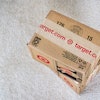Musk's Boring Company to Sell Giant LEGOs Made Out of Rocks
Say what you want about the Boring Company, but Elon Musk's tunnel-digging start-up knows how to market. Just before deliveries for the company's wildly popular flamethrower start in May, Musk teased the latest new offering: giant LEGO-like bricks made from the excess rock created from the tunneling process.
Musk broke the news on Twitter this week. According to the tweet, the "lifesize LEGO-like interlocking bricks" could be used to create anything from sculptures to buildings. According to a subsequent Tweet, Musk said that the first kits will be inspired by ancient Egypt, so you can make your own pyramid or Sphinx. It might actually make a fitting material for that controversial wall that everyone has been talking about.
The Boring Company wants to build a network of tunnels that transport people and goods using high speed electric sleds. According to Musk, the bricks will be strong enough to be rated for seismic loads, but bored in the middle to keep them light, so they could also be used as a portion of the tunnels’ lining as the company tries to limit the project’s carbon footprint.
While they're at it, they might want to spec out a kit that build's sculptures of Musk. If he delivers on his many grandiose ventures, including Tesla and SpaceX, and he just might deserve it.
How to Make a $500 3D Bioprinter
The prospect of 3D printing organs has helped fortify my poor life choices over the last ten years. That and a hope that one of my family members goes into medicine.
New research out of Carnegie Mellon looks to democratize 3D bioprinting, so I can lay off on the not so subtle hints as to why Uncle David needs you to be interested in STEM ... it's life or death.
Researchers have not only designed a low-cost bioprinter, but they released the plans as open source. The team made the machine by hacking an off-the-shelf desktop 3D printer. In a new paper, the team provides instructions for printing and installing the syringe-based, large volume extruder (LVE) to modify any plastic printer into a 3D bioprinter.
Commercial bioprinters can range from $10,000 to more than $200,000, and they're closed source machines - unless you don't mind voiding the warranty. This bioprinter that can be built for less than $500.
The LVE opens to doors for researchers, makers and professionals to experiment with 3D printing biomaterials and fluids, such as heart tissue. The team hopes their idea helps seed innovation, enabling the technology to rapidly expand and address a wide range of diseases. We could soon be repairing or replacing damaged heart tissue with healthy 3D-printed tissue.
Electric Highways Will Charge Cars as You Drive
The biggest concerns with electric vehicles surround the battery. Charge times, charging station location, and limited range have kept people from pulling the trigger on the plug-ins.
Researchers at the University of Colorado Boulder believe that they have an answer. The engineers want to add charging plates to a dedicated lane in the road. The plates would wirelessly charge your battery as you drive over the pads, making it possible to drive thousands of miles without ever having to plug-in.
The team has spent the last two years developing a proof-of-concept that transfers electrical energy through electric fields at very high frequencies. Think wireless charging for your phone, only across thousands of miles of infrastructure. Since you are speeding over the pads, they would be spaced apart to make sure that the system provides a continuous charge as you pass over each plate.
The technology could eliminate a lot of current problems; batteries could be smaller, ranges further, and the need for charging stations virtually non-existent.
The researchers are still working on the electric highway, but the technology could soon pop up in the industrial space, where it would be used to keep automated robots and forklifts charged. Some say that it could even be used for Hyperloop systems.
This is Engineering By Design.





















